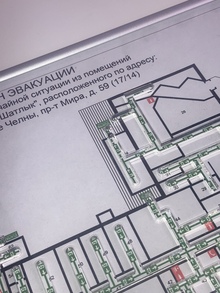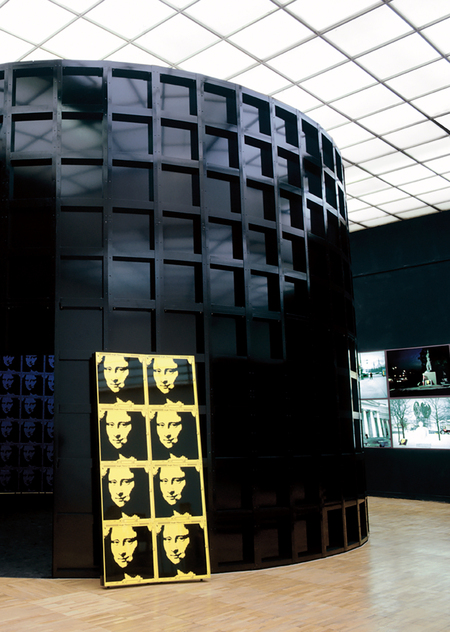
Mona Lisa Travels. VII. Mona Lisa Time Tower
MARC SCHEPS
MONA LISA TIME TOWER

Installation Mona Lisa Time Tower, 2004. Aluminum, acrylic lacquer
(50 colors), varnish, diameter 10 m, height 6 m. Exhibition Mona Lisa 500, State Tretjakow Gallery, Moscow, 2004
This project by George Pusenkoff represents a voyage through space and time, a voyage that is by no means finished. It is both an imaginary and a real trip, in the course of which the artist tries to gain new insights into familiar territory while, at the same time exploring unknown corners of the universe.
But it is also a voyage into the creative imagination of the artist, into the depths of his unconscious. The voyage begins by returning to the past, to the age when Leonardo painted his Mona Lisa. Leonardo da Vinci is a source of inspiration for Pusenkoff, since he is likewise interested equally in both art and science. For Leonardo, these are two parallel spheres (he published his treatise on flight at the same time as he was painting the Mona Lisa), while for Pusenkoff, science and art intermingle, merging and giving birth to a digital form of painting in pixels.

Spektrum scale of 50 colors created for the Installation Mona Lisa Time Tower. Computer draft, 2004

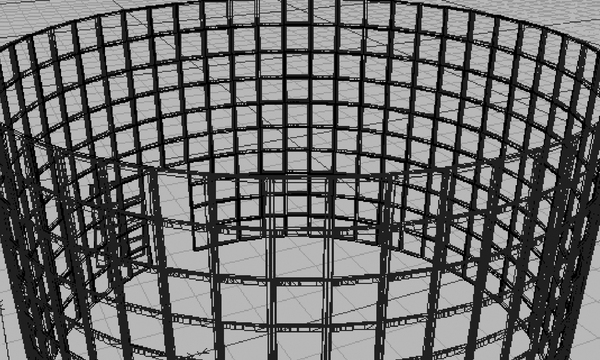
Computer simulations of Mona Lisa Time Tower, 2004
Pusenkoff’s Single Mona Lisa 1:1 has a square format, with variable dimensions and changing colors. Many other artists have identified with the Mona Lisa, even going so far as to endow her with their own features, as was the case with Duchamp and Dalí.
For Pusenkoff, the Mona Lisa has become his female alter ego, an iconic representation of his own artistic identity.
Warhol, by contrast, saw the Mona Lisa as nothing more than just another celebrity in his portrait gallery, which in turn was merely an accumulation of impressions gleaned from the mass media. Pusenkoff regards her however as an absolute — and thus unalterable — icon, like Malevich’s black or red or white square. At the same time, she can be reproduced ad infinitum, i.e. cloned, while always remaining identical in design regardless of medium, material, size or color.
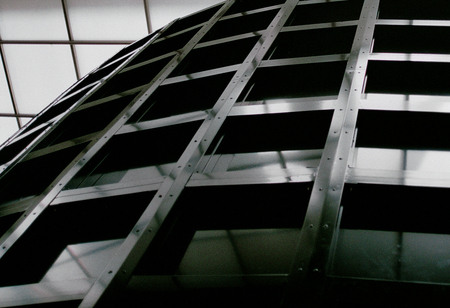
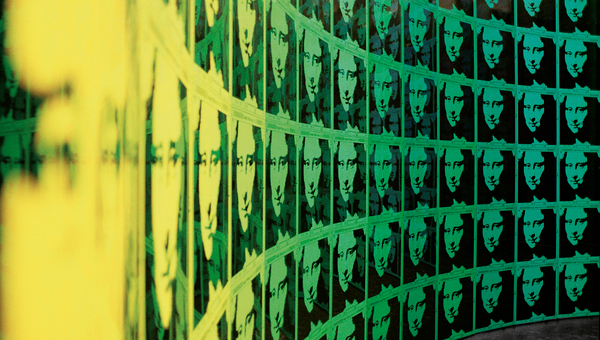
Installation Mona Lisa Time Tower (outside and inside). State Tretyakov Gallery, Moscow, 2004
Exhibition Mona Lisa 500, State Tretyakov Gallery, Moscow, 2004
When Pusenkoff was invited to exhibit at the Tretyakov Gallery in 2004, he asked me to help him conceive a fitting project. Since all the world was celebrating the 500th birthday of Leonardo’s Mona Lisa at the time, I suggested that the artist display 500 images of his pixelated Single Mona Lisa 1:1. My idea was based on Pusenkoff’s previous work, and he greeted it with enthusiasm. His first picture of the Mona Lisa dates to the year 1993, when he showed her in a work titled… said Duchamp, thus acknowledging the authorship of the great Dadaist whose iconoclastic gesture inspired many artists, from Malevich to Morimura. He doesn’t name the Mona Lisa, but he does include in his picture the name of the poet Apollinaire (who was wrongly accused in his day of stealing her). He juxtaposes her with a billboard and exhibits the picture as an improved readymade from the years 1916-17.
The artist thus situates his work between the avant-garde art of the early 20th century and an image from pop culture, between the critique of a myth and its popularization as an everyday visual object.
After switching to digital imagery as his preferred medium, Pusenkoff created his first Single Mona Lisa 1:1 in 1997 and presented her in blocks of nine and later of 50 pictures, each a different color. In 2003 we find her in a large-scale mural (Art River) in Geneva. The Tretyakov show also presented an opportunity to revisit a photographic project he did in 1998, Mona Lisa Goes Russia, and give it a new dimension. Since Pusenkoff was at the time holding negotiations on the realization of his project Mona Lisa Goes Space, we decided (since we didn’t have a model yet) to present the idea in the exhibition, which is why we gave it the title The Travels of the Mona Lisa.
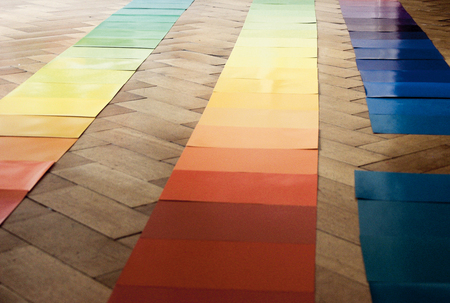
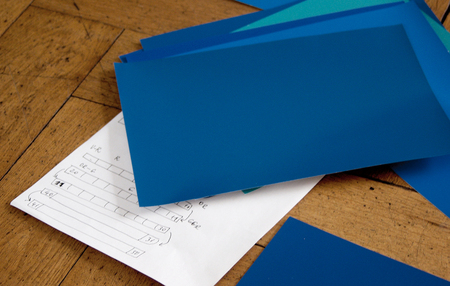
Composition of the color circle with the help of RALDesign and Brillux palettes in the studio
We at first planned for the 500 images of the Mona Lisa to cover a wall; we even thought about five blocks of 100 each, but in the end we were fascinated by the idea of making the piece into a journey through time and having the work run continuously. Remembering a rainbow that appeared on a photo of Mona Lisa Goes Russia, Pusenkoff came up with a color scale of 500 colors, on the basis of which he began to create variations on the computer. Now the idea of an independent structure suggested itself, whose exact form and proportions would be determined for example by the room set aside for the exhibition.
Installation Mona Lisa Time Tower (intside, detail), 2004
For his journey through time, Pusenkoff developed a huge round tower with a diameter of 10 meters, a circumference of 30 meters and a height of 6 meters. The exterior consists of a round aluminum cylinder made of 500 carefully aligned black squares, at first giving the impression of an impregnable stronghold. Walking around it, one finally discovers that 8 squares of the cylinder’s surface have been removed in order to create an entrance. Inside, the tower consists of 500 images of Single Mona Lisa 1:1, each 60×60 cm, arranged in ten parallel circles of 50 Mona Lisas each. This time tunnel plunges us into a space and time dominated by the repetition of 500 enigmatic smiles and 1,000 eyes that look at us without seeing us.
For the visualization of the space-time continuum that unfolds in this structure, Pusenkoff chose a sequence of rainbow colors that capture the natural prism of light from red to yellow to green to blue to violet. He selected 50 different shades, each forming a horizontal circle. This circular rainbow has no beginning and no end and could continue upwards on to infinity.
The tower is empty, an enormous cylinder filled only by the rays of the 500 images of Pusenkoff’s Mona Lisa. It is constructed completely out of aluminum, and the black cladding and the colors of the 500 Mona Lisas were achieved using high-gloss industrial paint that reflects the world around it; the floor is also shiny black. Light floods down from the top of the Mona Lisa Time Tower.
Installation Mona Lisa Time Tower (outside, detail), 2004. Aluminum, acrylic lacquer (50 colors), varnish, diameter 10 m, height 6 m. Exhibition Mona Lisa 500, State Tretyakov Gallery, Moscow, 2004
With this work Pusenkoff overturns the world of the Renaissance — symbolized by the still-lively memory of Leonardo da Vinci and his Mona Lisa — to show us the reality of the visual world of the 21st century. We must keep in mind that just a stone’s throw away stands another tower, the Tatlin Tower, which embodies one of the great utopias of the 20th century. The utopia that emanates from the Tatlin Tower, a permanent exhibition at the Tretyakov Gallery, is visualized by a diagonally ascending spiral, while Pusenkoff’s Mona Lisa Time Tower moves both horizontally and vertically, i.e. in both time and space, ending in a wreath of light pouring down into the empty tower. Pusenkoff has created a total environment; visitors who enter it find themselves in a closed universe — their senses stimulated by the spectrum of colored light and the obsessive repetition of the Mona Lisa logo which together form the interior of the tower.
True to the universal spirit of Leonardo, Pusenkoff fills the tower space with music. He chose from Leonardo’s archives a sequence of notes, which served as the basis for a 20-minute composition that can be played in a loop. He calls this the Voice of Mona Lisa. The closed, circular image of the Mona Lisa rainbow is thus accompanied by a continuous acoustic component in the space and time of the tower, creating an indissoluble symbiosis.
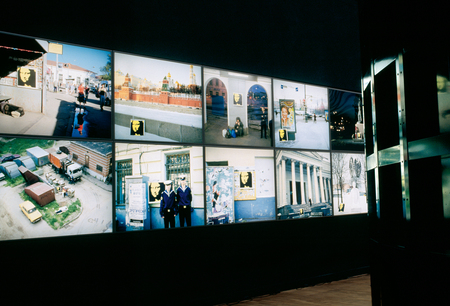
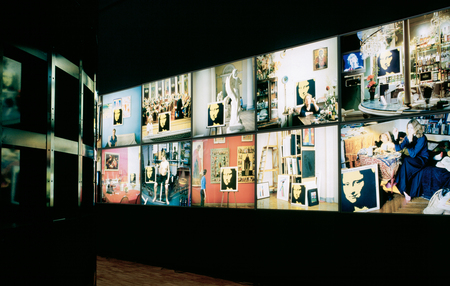
Photo installation Mona Lisa Goes Russia, 36 light boxes 120×150×15 cm. Exhibition Mona Lisa 500, State Tretyakov Gallery, Moscow, 2004
All of the great artists of the 20th century, beginning with Malevich and Marcel Duchamp, have taken an iconoclastic approach to Leonardo’s masterpiece. It was considered good form at the inception of modern art to «kill» the image of this «uncanonized saint», and the Italian Futurists even went so far as to place a funeral wreath at her feet. But this attitude was not without a touch of ambiguity since it did not reject the artwork itself but rather what it stood for in the present, i.e. a reactionary clinging to obsolete values, hindering the dawn of a new form of art.
Today in our postmodern era this iconoclastic attitude has lost all its meaning. Pusenkoff was well aware of this when he decided to create a modern Mona Lisa for our times, a universal symbol of humanity in its female form, an authentic original that can be endlessly reproduced and disseminated. This is why the image is captured in the matrix framework of the computer that gave birth to it.
The spatial arrangement of the flat image of the Mona Lisa situates it in four-dimensional space, and the surrounding world is mirrored in its glossy painted surface. The faces of the Mona Lisa — in her 50 different hues — reflect one another; they overlap and, depending on the light and the position of the viewer in the empty space, they generate various images of the tower, an endless depth and an almost immaterial transparency. In its holistic symbiosis, the interior of the tower creates a Mona Lisa universe.
Installation Mona Lisa Time Tower (aoutside), 2004. Aluminum, acrylic lacquer (50 colors), varnish, diameter 10 m, height 6 m. Exhibition Mona Lisa 500, State Tretyakov Gallery, Moscow, 2004
By translating Mona Lisa into a spatial phenomenon, Pusenkoff went beyond Warhol’s repetition of a flat, two-dimensional picture and set foot in the spatial universe of the 21st century. Pusenkoff’s tower stands at the threshold between past and present. It is in one sense a tribute to Leonardo da Vinci, the universal genius who painted the Mona Lisa 500 years ago.
But the tower is also a «hat off» to all modern artists who breathed new life into the myth — even if it was done in an iconoclastic tenor that over the century gradually lost its steam. Pusenkoff gives us a glimpse into the future with an outer-space-ready, digitized, cool, pixelated, metallic Mona Lisa rendered in colors that gleam like the body of a Mercedes. In the process, he remains a visual artist reflecting on the impact of an image, sensitive to every nuance, attracted by the possibilities offered by new materials, ever-attentive to the problems of structure. The tower is the end result of these efforts, an important step in a body of works that is developing with great discipline, but which at the same time is inspired by a passion for art and an insatiable curiosity.
